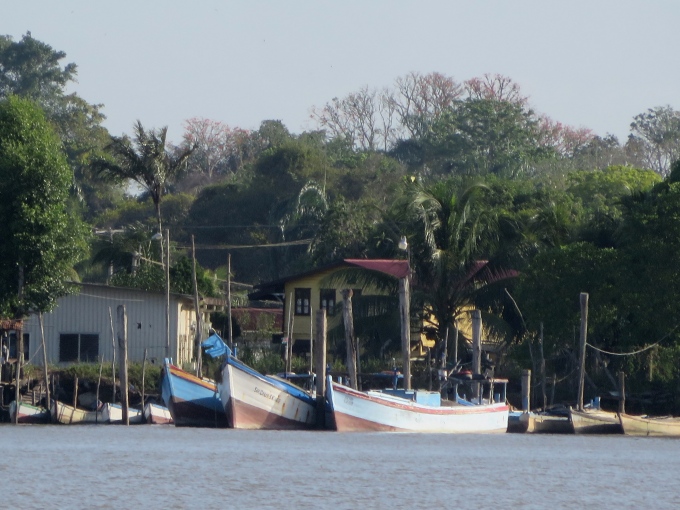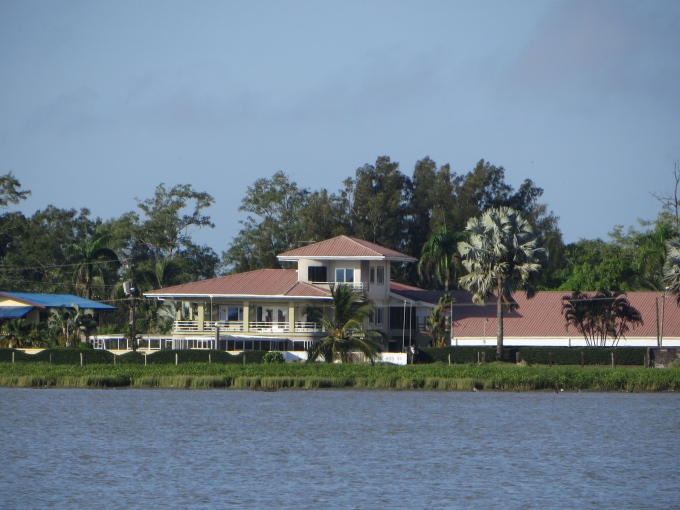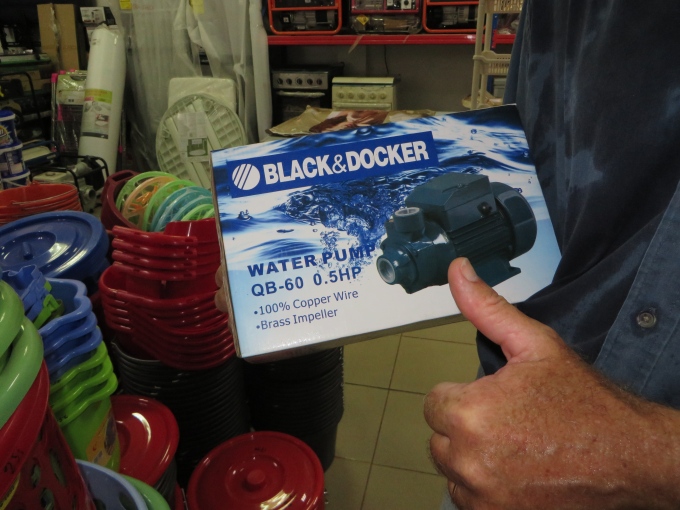About Suriname
/ Known as Dutch Guiana before its independence from the Netherlands in 1975, Suriname is about the size of the US state of Georgia and considered by some, to be the best of the Guianas for tourism. We're about to find out. Wedged in between Guayana, French Guiana and Brazil with the Atlantic coast to the north, there continues to be border disputes with the neighbors.
Known as Dutch Guiana before its independence from the Netherlands in 1975, Suriname is about the size of the US state of Georgia and considered by some, to be the best of the Guianas for tourism. We're about to find out. Wedged in between Guayana, French Guiana and Brazil with the Atlantic coast to the north, there continues to be border disputes with the neighbors.
The official language here is Dutch, but English is widely spoken as is the local language known as Sranan Tongo (Surinam tongue) or Takitaki. Our Dutch is a bit rusty … okay, it's non-existent, but we're picking up a few words as we go. We certainly know yes/ja (yah), no/nee and beer/bier. A local woman, Pamela, who works at the yacht club is helping with translations. Today's word was “kip” - chicken. She's also described some of the local Javanese dishes served here … for instance, bami and nasi (fried noodles and fried rice). We'll figure it out as we go. That's half the fun.
We'd actually cleared into the country when we visited Albina just before we left, so we were saved the hassle of taking a bus or taxi into Paramaribo to handle all the formalities. We had to purchase a Tourist Card (€20/pp) at the Surinamese consulate in Saint-Laurent before entering Surinam, payable only with a credit card. They added a €2 handling and VAT fee. We completed a rather long form in duplicate for the Immigration fellow in Albina. Then stamp, stamp, stamp. The process was easy and painless, however. We have 30 days to visit Suriname before having to renew.
The currency is the Surinamese dollar (SRD) with a current exchange rate of 3:1 to the US$. However, most hotels and even the marina here, charge in Euros (€) or US$ because of the significant fluctuation in the local currency. Credit cards are not accepted as widely here as they were in French Guiana. Cash is king, a tough transition for credit card kids like us. In general, things are considerably cheaper here than in French Guiana, a welcome change. But, of course, we're missing our 70¢ fresh baguettes and croissants.
The Dutch were the first to settle land in the Guianas. They formed the Dutch West India Company in 1621 and traded with the local AmerIndian people. Cocoa and sugar plantations were established along the rivers with the locals supplying much of the labor. When the locals were nearly wiped out by diseases introduced by the Dutch, slaves were imported from western Africa. Escaped slaves known as Maroons formed their own settlements in the interior, maintaining much of their African culture and language. These Maroon villages still exist today in central Suriname. Maroon wood carving is considered some of the best in South America.
It was the British, however, who founded Paramaribo, Suriname's capital city, on the banks of the Suriname River in 1650. In the Treaty of Breda (1667), the Dutch chose to retain Suriname and their colonies on the Guyanese coast, but ceded French Guiana to France. The Brits also got New Amsterdam in the trade ... better known today as Manhattan, New York. Ouch!
When the British banned slavery in 1834, they also discouraged all slave trade in the Caribbean forcing plantation owners to seek other cheap labor. Enter a huge influx of Asians especially from India, Indonesia and China. Today's Suriname reflects this very diverse, quite harmonious, ethnic mix. Politics in today's Suriname, however, is a different story ... about which we'll make no comment.
A little Suriname trivia for you …
-
Suriname is the smallest country on the South American continent. And, by the way, it's the 12th of 13 South American countries that we've visited. One more to go … Guyana.
-
The country is sparsely populated, ~500,000 people, half of which live in the Paramaribo area.
-
This is a beer-drinking country, although they produce excellent, inexpensive rum as well. The local beer is Parbo. The local rum is Borgoe and it runs about US$9/liter.
-
In 2002, the country's capital city, Paramaribo, was listed as a UNESCO World Heritage site.
-
The country’s name is believed to be derived from a Taino group called Surinen, who first inhabited the region.
-
The bauxite (aluminum ore) industry dominates the country's economy. It comprises more than 15% of the GDP and 70% of export earnings.
So, what's on the agenda while we're here? Chores, of course. Varnishing is key... followed by the usual stuff … deck washing, laundry, cleaning and a few repairs and routine maintenance. Then, there's all that sightseeing that must be done. We're hoping to spend a weekend in Paramaribo to see the sights,and perhaps a trip into the jungle if we can find one that fits our budget. We'll definitely be busy, so why not clear your schedule and come along? We could also use a little help with the deck chores, in case you'd care to volunteer.































